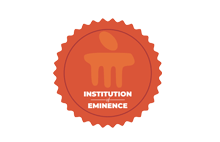Exacerbation of Fatality Rates Induced by Poor Air Quality Due to Open-Air Mass Funeral Pyre Cremation during the Second Wave of COVID-19
Document Type
Article
Publication Title
Toxics
Abstract
This study investigates the air pollution-induced mortality rate during the second wave of COVID-19, which claimed several thousand lives in the capital city of India, New Delhi, even during a lockdown period. Delhi is a hotspot of unhealthy air quality. During the second wave of COVID-19 in 2021, surface ozone levels were observed to be higher, which had a direct impact on lung function, thereby making people more susceptible to COVID-19. The correlation coefficient between surface ozone concentration and mortality has been observed to be 0.74 at a 95% confidence level. This work focuses on the plausible impact and feedback of poor air quality induced by the burning of open-air funeral pyres due to the increased COVID-19 mortality rate in New Delhi, estimated by using an epidemiological model (AirQ+) of the World Health Organization. The mortality rate estimated quantitatively with the aid of AirQ+ is 1.27 excess deaths per 100,000 population due to surface ozone from pyre burning. The findings suggest transformational system goals before the resurgence of a subsequent wave.
DOI
10.3390/toxics10060306
Publication Date
6-1-2022
Recommended Citation
Manoj, M. G.; Satheesh Kumar, M. K.; Valsaraj, K. T.; and Vijayan, Soumya K., "Exacerbation of Fatality Rates Induced by Poor Air Quality Due to Open-Air Mass Funeral Pyre Cremation during the Second Wave of COVID-19" (2022). Open Access archive. 4248.
https://impressions.manipal.edu/open-access-archive/4248


